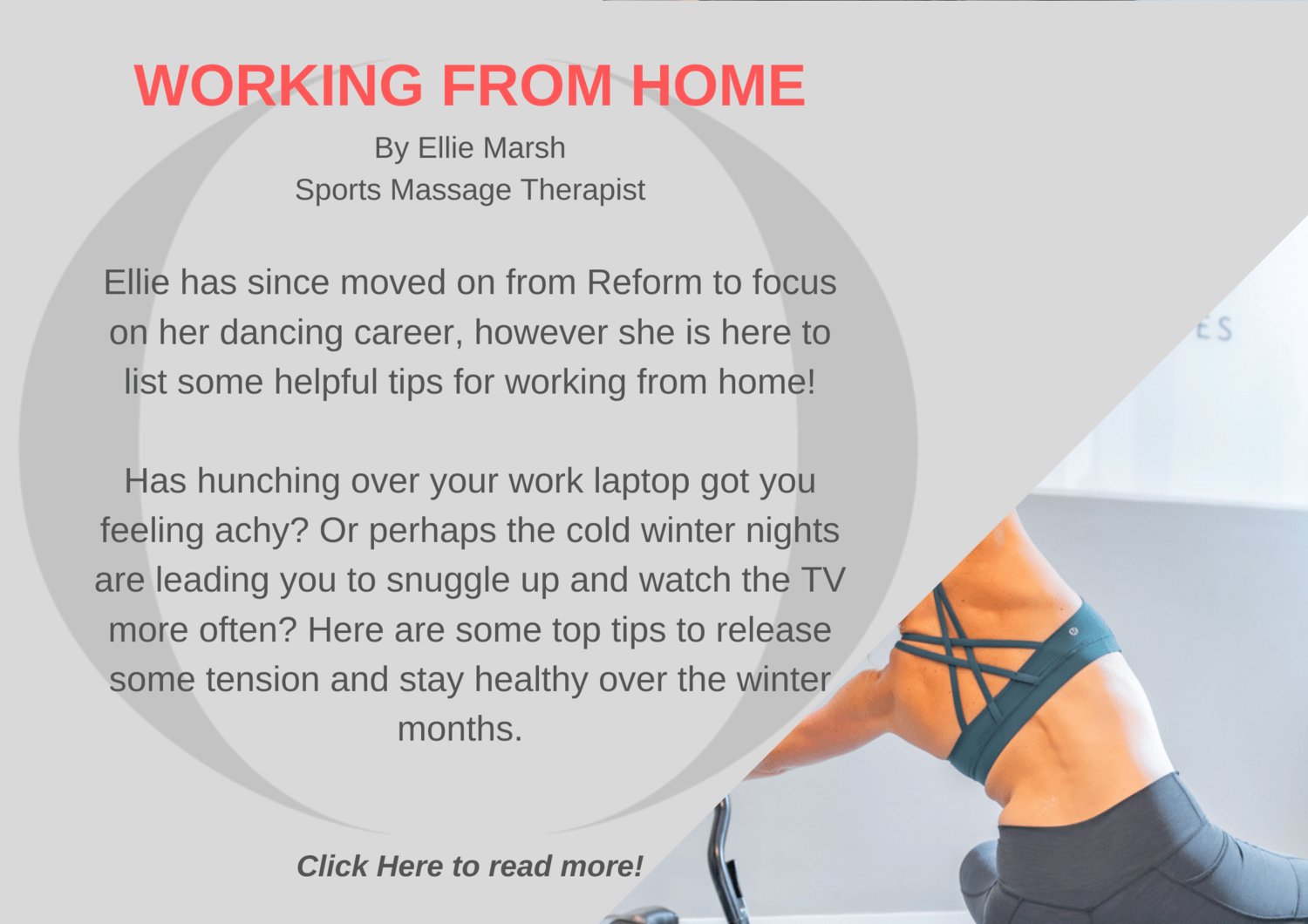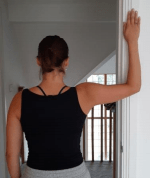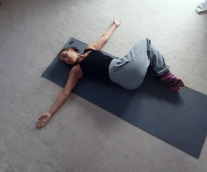
Has hunching over your work laptop got you feeling achy? Or perhaps the cold winter nights are leading you to snuggle up and watch the TV more often? Here are some top tips to release some tension and stay healthy over the winter months.
Many of us have found ourselves working from home with furniture that is not always supportive for all day use. Looking at a computer that is too low can cause us to spend most of the day looking down, leading to rounded and raised shoulders, tight Pectorals and Upper back muscles. Here are some ways to prevent and treat the zoom hunch as we try and connect through our screens!
Preventative Actions:
1. It is important when working from home to ensure that your chair is the correct height and is providing you with the support that you need day to day. Adjust your chair so that your feet can be flat on the floor, with knees in line (or slightly lower) than your hips.
2. If working using a computer or laptop, ensure that your keyboard is directly in front of you and that the screen is just above eyeline. (This will help avoid hunching over your laptop and causing tension through the upper back and chest).
3. Ensure that you are taking regular breaks from the screen and seated position. This will allow not only your eyes to rest from looking at a screen, but also encourages blood flow through movement which will keep you feeling energised and more able to focus when returning to your desk. When in the office, you might usually get up to chat to others or go and make a cup of coffee. Your body and mind need these breaks even if you are working from home!
4. Try to ensure that you are exercising regularly and keeping your core engaged. A strong core will support the spine in the seated position and allow the body to maintain correct posture, leading to less muscle tension elsewhere in the body!
It is worth mentioning that no one has correct posture all the time. Just try to remind yourself once an hour and slowly build in these suggestions so that they can become habits. It’s all about finding your correct posture for a sustainable and healthy way of working rather than a textbook ideal!
Stretch:
Our muscles have a range of functions such as: supporting the skeleton to allow movement, providing stability to our joints, keeping us warm and many more! During the winter months, we can often find our shoulders up by our ears from the cold or be hunched over our work desks. In order to keep our muscles healthy, we need to look after them! One of the ways we can do this is by stretching!
1. Trapezius stretch:
We often forget that our heads are heavy and our neck and surrounding muscles (like Trapezius) are working very hard all day. If you feel like your shoulders are always creeping up towards your ears, then this one’s for you! Standing with parallel feet, reach one arm out to the side. Then flex the hand, whilst aiming to keep your shoulder relaxed and side tilt your head away from the lifted arm. You should feel this through your upper shoulders, neck and sometimes into the upper arm.
2. Pectoralis stretch:

When working in front of our bodies all day, our Pectoral muscles are in constant action, leading to tension in these areas. Find a doorway and create a 90 degree bend in the elbow. Then whilst keeping your hips square in a small lunge, allow your torso to move forwards. You should feel a stretch along the front of your chest.
3. Lower back twist:

When sitting down for a large part of the day, our lower back can become tight and compressed. This stretch will also allow the front surface of the body to open and allow a torso twist. Aim to keep knees and ankles together and gently let them fall to one side. Open out the arms to the side and allow the head to gently twist in the opposite direction for some extra stretch.
4. Hip Flexor stretch:
When sitting down, our hips are in constant flexion, which can leading to our hip flexors being very tight. In this stretch, aim to have the front knee at 90 degrees and keep your hips square. You can lower your pelvis down for a deeper stretch.
Massage:
The most common problem areas I see as a Sports Massage Therapist are upper back, neck and chest. Our whole lives are built in front of us (writing, phones, laptop typing, picking up children etc) and we need to ensure that we counter this with proper physical care to create balance in the body. One of the best ways to support our muscles is with massage. Massage reduces muscle tension, increases circulation and reduces stress. Sports Massage is able to target specific problem areas with advanced techniques to not only maintain your healthy body but also support you through injuries and recovery.